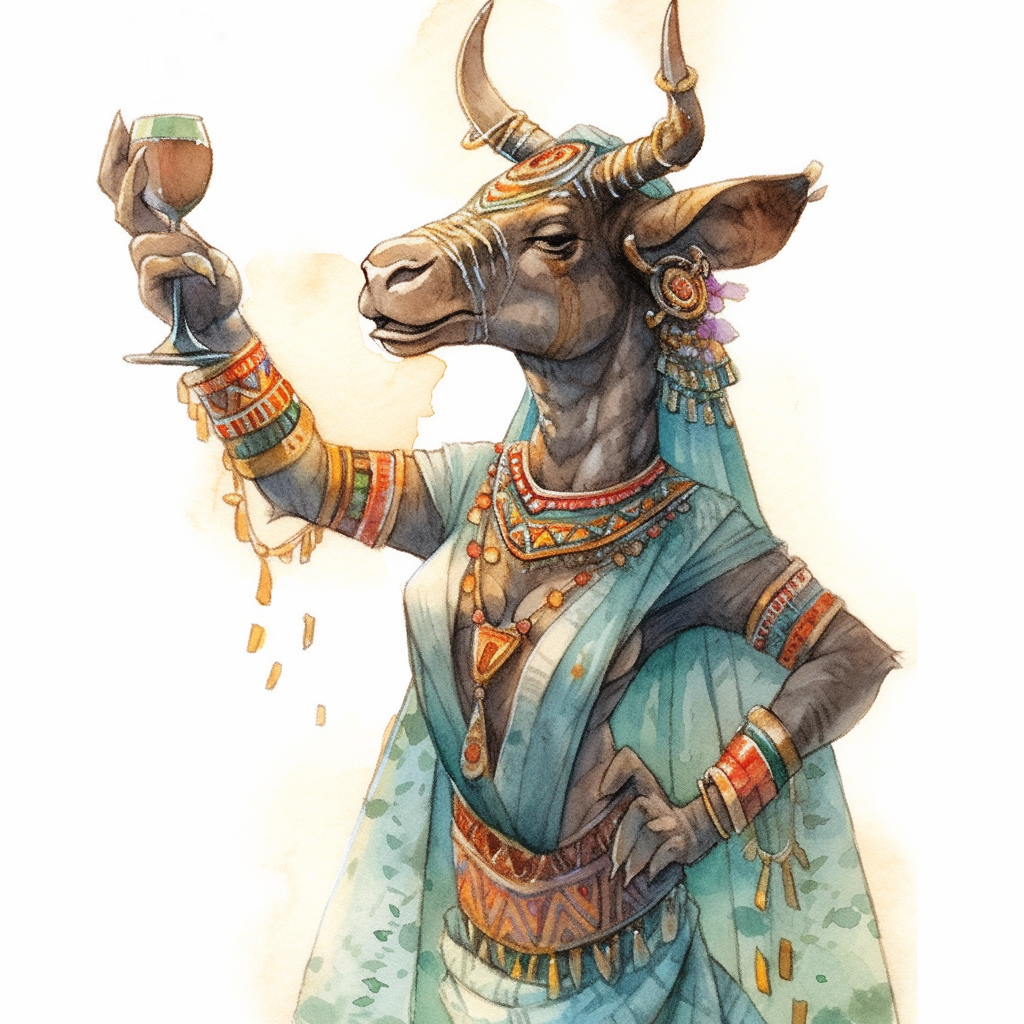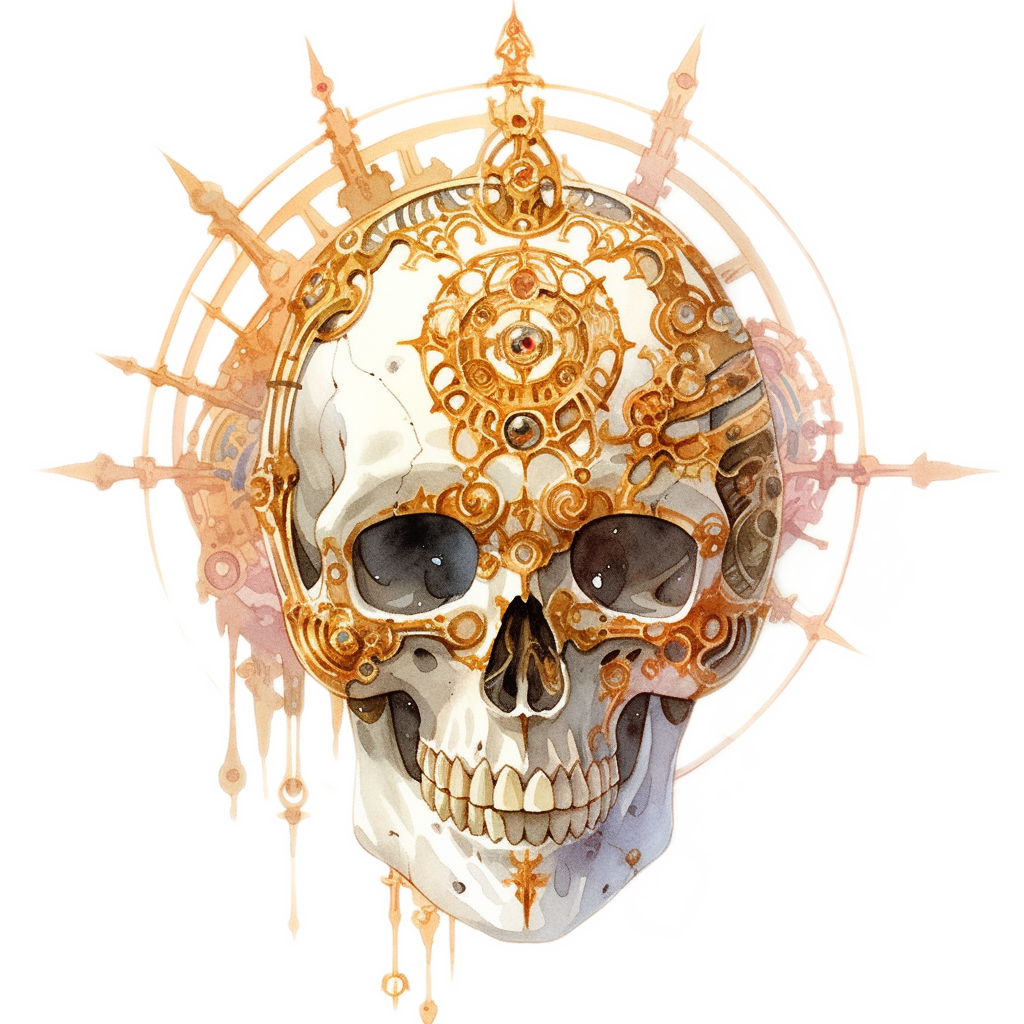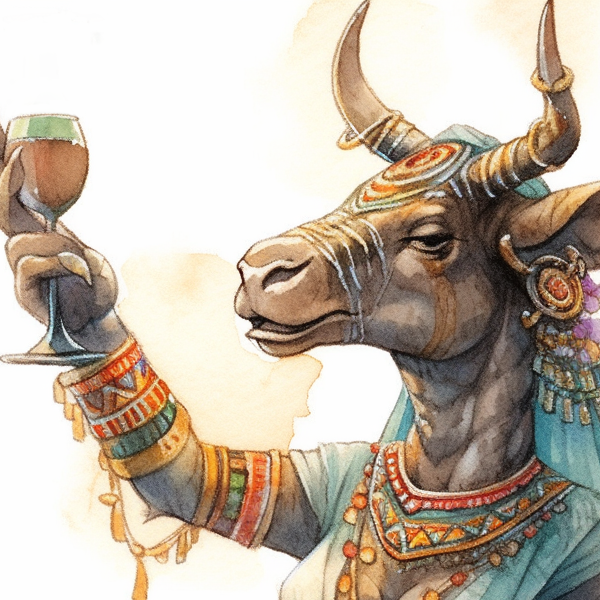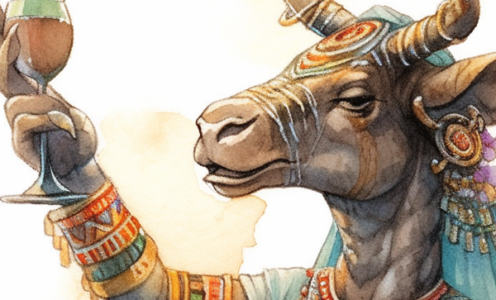Hathor
Mother Hathor. NG lesser power of childbirth, music, love, poetry (She/Her)
Pantheon: Egyptian
Symbol: A cow
Realm: Elysium / Thalasia / Amenti
Known Proxies: Khentamentiu (proxy lupinal [he/him] / NG)
Hathor is one of the most ancient goddesses of Egypt. In ancient tales, she is the sky, the mother of Horus and the embodiment of motherhood. In later times, Isis took over the role of Horus’ mother, and Hathor became, more generally, the goddess of childbirth.
Hathor is also the goddess of music and love, which led the Greeks to believe she was an aspect of their goddess Aphrodite. In some places, she was also given other godly functions; in Ineb-hedj, Hathor is also the goddess of trees; in Uaset she is the guardian of the dead.
In another very ancient tale, Hathor cured Horus’ blindness after a battle against Seth in which he lost both eyes. Hathor is the wife of Sobek the crocodile god, another of the most ancient Egyptian gods. Although she is good and he is evil, they get along very well and she often visits him in his realm in the Grey Waste. They have a child, the hero Khons, a mighty chronomancer.
The Priesthood
Hathor’s petitioners are blessed with the ability to have children. These children, known as the Amentiu, are raised in Amenti to become warriors in the defence of Ra and Mesektet. Some others join the Guardians and wander Thalasia to fight any invaders. The Amentiu are brown skinned and have cow heads; they are considered as planar humans for all game purposes.
Hathor’s worshippers are either compassionate bloods who are always willing to help fellow Egyptians (midwives and nurses), fun-loving party animals (Hathor worshippers’ parties can be quite reckless) or stern guardians of necropolises, reflecting the Rule of Threes. Egyptian druids, would be considered as priests of Hathor from Ineb-hedj.
Source: MC Gianni and Jon Winter-Holt



